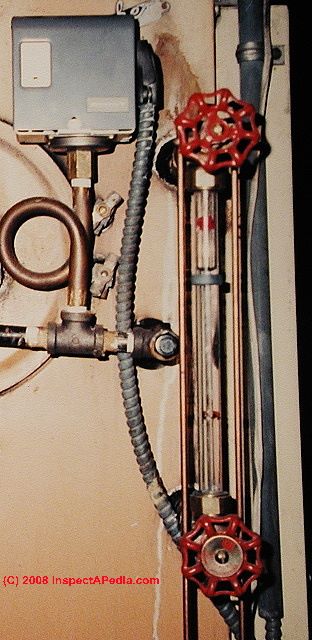If you're a tenant and you've noticed that your steam radiator isn't providing heat, there are several things you can do to troubleshoot the issue before contacting us.
Step 1: Check the Valve
The first thing to check is the valve on the steam radiator. Make sure the valve is open and allowing steam to enter the radiator. If the valve is closed, the radiator will not receive steam and will not provide heat.
Here's an some examples of what a valve on a steam radiator may look like:
Step 2: Check the Air Vent
If the valve is open but the radiator still isn't providing heat, the next thing to check is the air vent. The air vent is located on the opposite side of the radiator from the valve and is used to release air from the radiator to allow steam to enter. If the air vent is clogged or malfunctioning, the radiator will not receive steam and will not provide heat.
Step 3: Check the Pressure
Another potential issue that can cause a steam radiator to stop providing heat is low pressure in the boiler. If the pressure is too low, steam may not be able to reach the radiator. Check the pressure gauge on the boiler and make sure the pressure is at the recommended level. Consult the manufacturer's instructions or contact your landlord or a professional HVAC technician for guidance on the appropriate pressure level for your specific boiler.
Here's an example of what a pressure gauge on a boiler may look like:
Step 4: Check the Water Fill Tube on the Boiler:
Check the Water Fill Tube on the Boiler:
Important:
Before starting, ensure the boiler and heating system are completely turned off and have cooled down to avoid burns or other injuries.
Steps:
- If this tube has no water in it, your steam system will not work.

If there is very very little or no water in the system you have to add water.
Add Water: Start slowly adding water. You should hear water flowing into the system.
Make sure you do not overfill the tube. There may be a marking on the tube indicating the level of water that should be added.
The normal water level should be no more than 1/2 to 3/4 of the way to the top of the tube.
Check the Pressure Gauge: Keep an eye on the boiler’s pressure gauge. Stop filling when it reaches the green zone, usually between 12-15 psi.
Warning:
Do not overfill the boiler. Doing so can cause dangerous pressure levels.
Step 5: Bleed the Radiator
If the valve, air vent, and pressure are all functioning properly, the final step to try before contacting a professional is to bleed the radiator. Bleeding the radiator involves releasing any air that may be trapped inside the radiator, which can prevent steam from reaching the entire radiator and providing heat. To bleed the radiator, use a radiator key to open the valve on the air vent and release the air until steam begins to escape. Many times you can do this with a wrench or bit.
Here's an example of what a radiator key may look like:
If these troubleshooting steps do not resolve the issue, contact us. Remember to always prioritize safety and follow appropriate precautions when working with heating systems.
By following these steps and using the linked photos as a reference, you may be able to troubleshoot and resolve issues with your steam radiator on your own.


